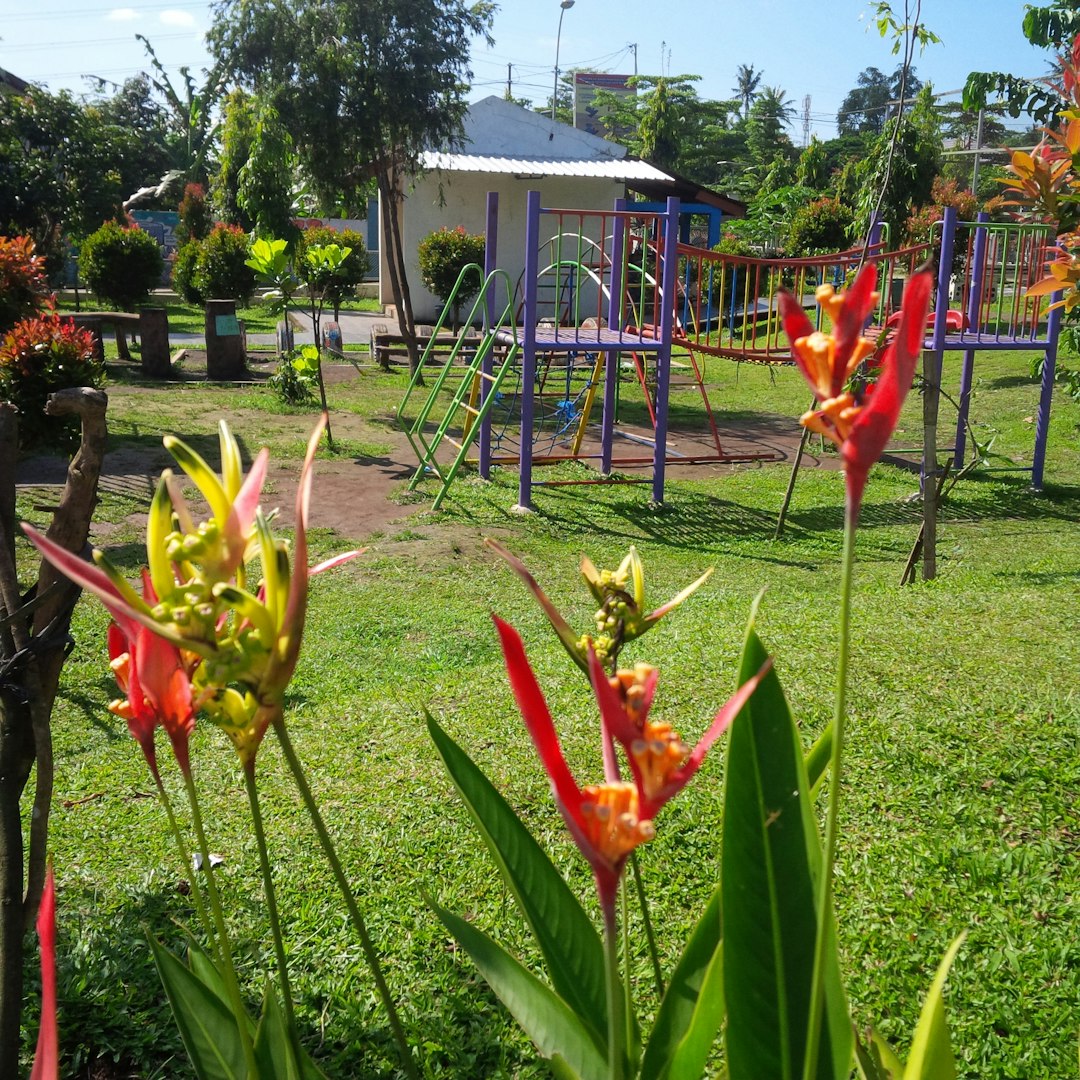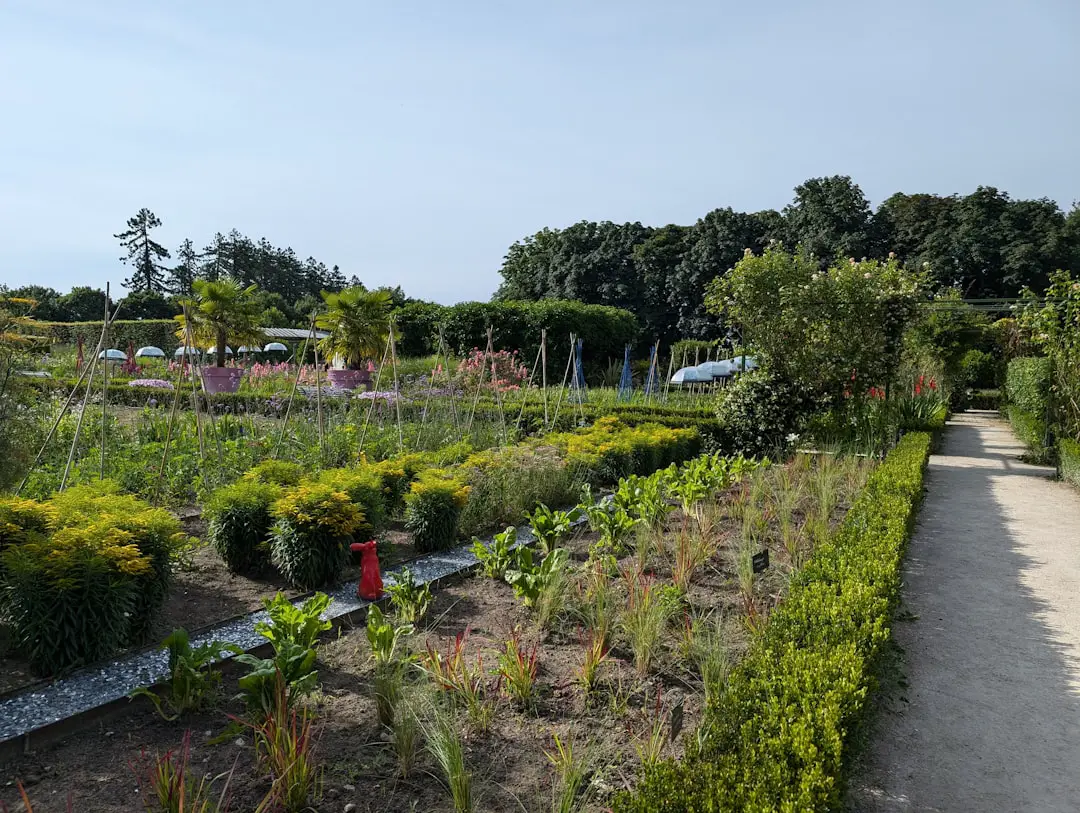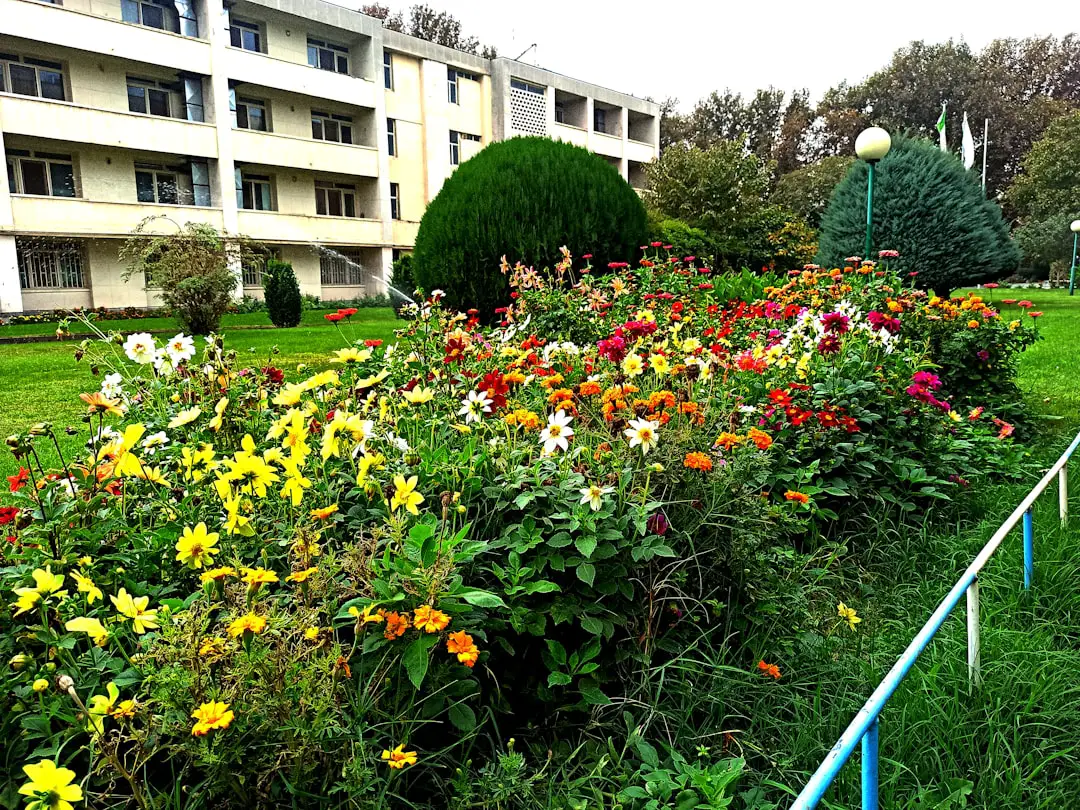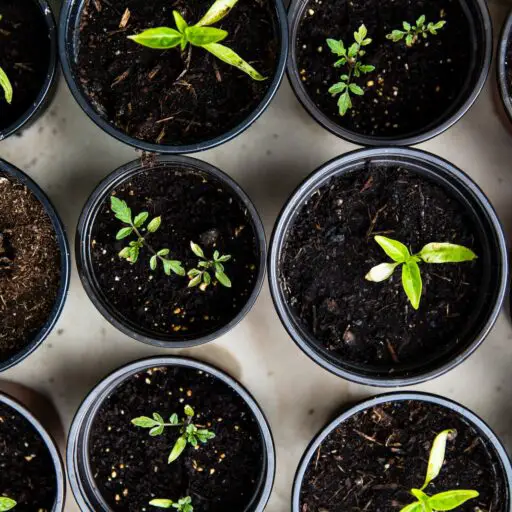Support our educational content for free when you purchase through links on our site. Learn more

Imagine a bustling city block transformed into a vibrant oasis where bees hum, butterflies dance, and native plants thrive—all thanks to a community garden. These green gems are not just pretty spots; they are critical lifelines for biodiversity and ecosystem health worldwide. But how exactly do these gardens work their magic on the environment? From nurturing soil superheroes to building urban wildlife corridors, community gardens play a multifaceted role in healing our planet—one plot at a time.
In this article, we’ll uncover 9 powerful ways community gardens support biodiversity and ecosystem health globally, backed by real-world examples, expert insights from Community Gardening™, and practical tips to get involved. Whether you’re a green thumb or a curious neighbor, you’ll discover how these shared spaces are quietly shaping a greener, healthier future for all.
Key Takeaways
- Community gardens create vital habitats for pollinators, birds, and native flora, boosting urban biodiversity.
- They improve soil health through composting and sustainable gardening, enhancing ecosystem resilience.
- Gardens act as ecological corridors, connecting fragmented habitats and supporting wildlife movement.
- By promoting water conservation and carbon sequestration, community gardens help mitigate climate change.
- These spaces serve as educational hubs, empowering communities to adopt sustainable practices.
- Overcoming challenges like space and funding requires community collaboration and policy support.
- Ready to start your own garden? Essential tools like gardening gloves, native seeds, and compost bins can help you get growing:
- Gardening Gloves: Amazon | Walmart | Burpee Official Website
- Native Plant Seeds: Amazon | Seed Savers Exchange
- Composting Bins: Amazon | Envirocycle Official
Dive in to discover how your local community garden can be a powerhouse for biodiversity and ecosystem health worldwide!
Table of Contents
- ⚡️ Quick Tips and Facts
- 🌱 The Roots of Resilience: A Brief History of Community Gardens & Ecological Revival
- 🌍 How Community Gardens Cultivate Biodiversity & Ecosystem Health Worldwide: The Many Ways!
- 🏡 Creating Green Oases & Habitat Havens in Urban Jungles
- 🐝 Boosting Pollinator Powerhouses: Bees, Butterflies, and Beyond!
- 🪱 Nurturing Soil Superheroes & Microbial Marvels for a Healthy Earth
- 💧 Championing Water Wisdom & Conservation Coolness
- 🌿 Fostering Native Plant Power & Local Flora Flourish
- 🦊 Building Ecological Corridors & Urban Wildlife Highways
- 💨 Mitigating Climate Change & Carbon Capture Gardens
- ♻️ Reducing Waste & Embracing Circularity Through Composting & Recycling
- 🧑🏫 Educating & Empowering Eco-Champions for a Sustainable Future
- 💖 Beyond the Bugs: Broader Benefits of Biodiversity-Rich Community Gardens
- 🚧 Challenges on the Path to a Greener Tomorrow: Overcoming Obstacles
- 🌐 Global Green Thumbs: Inspiring Community Garden Initiatives Worldwide
- 🛠️ Cultivating Your Own Oasis: Practical Steps for Biodiversity Boosters
- 🚀 The Future is Green: Scaling Up Community Garden Impact for a Healthier Planet
- ✅ Conclusion
- 🔗 Recommended Links
- ❓ FAQ
- 📚 Reference Links
Quick Tips and Facts
As we explore the many ways community gardens support biodiversity and ecosystem health worldwide, it’s essential to understand the global impact of these green spaces. According to a study by the Food and Agriculture Organization (FAO) of the United Nations, community gardens can play a crucial role in promoting sustainable agriculture and conserving biodiversity. To learn more about the benefits of community gardens, visit our article on community garden benefits to the global community. Here are some quick tips and facts to get you started:
- Community gardens can be found in urban, suburban, and rural areas, and can range in size from a few square feet to several acres.
- These gardens often feature a variety of native plants, fruits, and vegetables, which help to support local pollinators and other wildlife.
- Community gardens can also serve as educational hubs, teaching people about sustainable gardening practices, composting, and wildlife conservation.
- In addition to their environmental benefits, community gardens can also have a positive impact on mental health and community building.
The Roots of Resilience: A Brief History of Community Gardens & Ecological Revival

Community gardens have a long history that dates back to the Victorian era in England. During this time, community gardens were seen as a way to improve public health and provide green spaces for urban residents. In the United States, community gardens gained popularity during the Great Depression, when they were used as a way to support food security and promote community self-sufficiency. Today, community gardens can be found all over the world, and are recognized as an important tool for promoting biodiversity and supporting ecosystem health.
Early Beginnings
The concept of community gardens has been around for centuries, with evidence of shared gardening spaces dating back to ancient civilizations. However, the modern community garden movement as we know it today began to take shape in the late 19th century. During this time, community gardens were often established in urban areas, where they provided a much-needed green oasis for residents.
The Role of Community Gardens in Ecological Revival
Community gardens play a critical role in ecological revival, as they provide a space for people to connect with nature and promote sustainable practices. By supporting local food systems and conserving biodiversity, community gardens can help to mitigate the effects of climate change and promote ecosystem health. To learn more about the benefits of community gardens, visit our category on benefits of community gardens.
How Community Gardens Cultivate Biodiversity & Ecosystem Health Worldwide: The Many Ways!
Community gardens cultivate biodiversity and ecosystem health in a variety of ways, including:
- Creating Green Oases & Habitat Havens in Urban Jungles: By providing a green space in the midst of urban development, community gardens can help to support local wildlife and promote biodiversity.
- Boosting Pollinator Powerhouses: Bees, Butterflies, and Beyond!: Community gardens often feature a variety of pollinator-friendly plants, which help to support local pollinators and promote ecosystem health.
- Nurturing Soil Superheroes & Microbial Marvels for a Healthy Earth: Community gardens often use sustainable gardening practices, such as composting and cover cropping, which help to promote soil health and support microbial biodiversity.
- Championing Water Wisdom & Conservation Coolness: Community gardens often feature water-efficient irrigation systems and rainwater harvesting systems, which help to conserve water and reduce waste.
- Fostering Native Plant Power & Local Flora Flourish: Community gardens often feature a variety of native plants, which help to support local ecosystems and promote biodiversity.
- Building Ecological Corridors & Urban Wildlife Highways: Community gardens can help to connect fragmented habitats and promote ecosystem connectivity, which is essential for supporting local wildlife.
- Mitigating Climate Change & Carbon Capture Gardens: Community gardens can help to sequester carbon and mitigate the effects of climate change by promoting sustainable gardening practices and supporting local food systems.
- Reducing Waste & Embracing Circularity Through Composting & Recycling: Community gardens often feature composting programs and recycling initiatives, which help to reduce waste and promote sustainability.
- Educating & Empowering Eco-Champions for a Sustainable Future: Community gardens often serve as educational hubs, teaching people about sustainable gardening practices, wildlife conservation, and ecological stewardship.
Creating a Community Garden
To create a community garden, you’ll need to gather a team of dedicated volunteers, secure a plot of land, and develop a plan for your garden. You can find more information on how to start a community garden on our website, including tips on garden design ideas and community garden policies.
Beyond the Bugs: Broader Benefits of Biodiversity-Rich Community Gardens
In addition to their environmental benefits, community gardens can also have a positive impact on mental health and community building. By providing a green space for people to connect with nature, community gardens can help to reduce stress and promote well-being. To learn more about the benefits of community gardens, visit our category on edible plants.
Challenges on the Path to a Greener Tomorrow: Overcoming Obstacles
Despite their many benefits, community gardens can also face a number of challenges, including limited funding, lack of space, and regulatory hurdles. However, by working together and supporting one another, community gardeners can overcome these obstacles and create thriving green spaces. You can find more information on how to overcome common challenges in community gardening on our website, including tips on community garden events.
Global Green Thumbs: Inspiring Community Garden Initiatives Worldwide
Community gardens can be found all over the world, and are recognized as an important tool for promoting biodiversity and supporting ecosystem health. From urban gardens in cities like New York and Tokyo, to rural gardens in countries like Kenya and Brazil, community gardens are making a difference and inspiring positive change. To learn more about community garden initiatives around the world, visit our website and explore our category on benefits of community gardens.
Cultivating Your Own Oasis: Practical Steps for Biodiversity Boosters
To create your own community garden, you’ll need to start small, gather a team of dedicated volunteers, and develop a plan for your garden. You can find more information on how to start a community garden on our website, including tips on garden design ideas and community garden policies. Some popular products for community gardens include:
- Gardening gloves: Amazon | Walmart | Burpee Official
- Seeds: Amazon | Walmart | Seed Savers Exchange Official
The Future is Green: Scaling Up Community Garden Impact for a Healthier Planet
As we look to the future, it’s clear that community gardens will play an increasingly important role in promoting biodiversity and supporting ecosystem health. By scaling up community garden impact, we can create a healthier planet and support a more sustainable future. To learn more about the future of community gardens, visit our website and explore our category on benefits of community gardens.
Conclusion

Community gardens are much more than just patches of green in our neighborhoods—they are dynamic ecosystems that actively support biodiversity and enhance ecosystem health worldwide. From creating vital habitats for pollinators 🐝 to improving soil health through composting and nurturing native plants, these gardens serve as urban oases that reconnect people with nature and foster ecological resilience. As we’ve seen, community gardens also provide educational opportunities, empower eco-conscious citizens, and help mitigate climate change effects by capturing carbon and conserving water.
While challenges like limited space and funding exist, the collective spirit of community gardeners and the proven environmental benefits make these green spaces indispensable. Whether you’re a seasoned gardener or a curious newcomer, cultivating or supporting a community garden is a powerful way to contribute to a healthier planet.
So, ready to dig in and grow together? Your local community garden awaits—bringing biodiversity, ecosystem health, and vibrant community life right to your doorstep. 🌿🌎
Recommended Links
👉 Shop Gardening Essentials for Your Community Garden:
- Gardening Gloves: Amazon | Walmart | Burpee Official Website
- Seeds (Native & Pollinator-Friendly): Amazon | Walmart | Seed Savers Exchange Official Website
- Composting Bins & Vermiculture Kits: Amazon | Walmart | Envirocycle Official Website
Books to Deepen Your Biodiversity & Gardening Knowledge:
- Bringing Nature Home by Douglas W. Tallamy — Amazon
- The Community Garden Handbook by Ben Raskin — Amazon
- Pollinators of Native Plants by Heather Holm — Amazon
FAQ

How do community gardens contribute to urban biodiversity and what are the benefits for local ecosystems?
Community gardens create green refuges in urban landscapes, transforming concrete and asphalt into thriving habitats. By planting a diverse array of native plants, vegetables, and flowers, they provide food and shelter for insects, birds, and small mammals. This increased biodiversity improves ecosystem services such as pollination, pest control, and soil enrichment. Moreover, these gardens help reduce urban heat islands and filter air pollutants, contributing to healthier local ecosystems and communities.
What role do community gardens play in supporting pollinators and other wildlife in urban areas?
Pollinators like bees, butterflies, and hummingbirds rely on nectar-rich plants and safe nesting sites, which community gardens abundantly provide. By incorporating pollinator-friendly plants such as milkweed, coneflowers, and native wildflowers, gardens become essential waystations for these species. Additionally, features like bee hotels and undisturbed soil patches support ground-nesting bees. This support helps sustain pollinator populations critical for food production and biodiversity.
Can community gardens help to mitigate the effects of climate change on local ecosystems and if so, how?
Absolutely! Community gardens contribute to climate mitigation by sequestering carbon in plants and healthy soils, reducing greenhouse gas emissions through local food production, and lowering reliance on carbon-intensive industrial agriculture. They also help manage stormwater runoff, reducing flood risks, and combat urban heat by providing shade and evapotranspiration cooling. These combined effects make community gardens a nature-based solution to climate challenges.
In what ways can community gardens promote sustainable gardening practices and reduce environmental impact on a global scale?
Community gardens are hubs for sustainable practices like organic gardening, composting, water conservation, and integrated pest management (IPM). By avoiding synthetic pesticides and fertilizers, they protect soil and water health. Composting reduces waste and enriches soil biodiversity, while rainwater harvesting conserves precious water resources. These practices, when adopted widely, reduce environmental footprints and promote circular resource use, contributing to global sustainability goals.
How do community gardens foster social and educational benefits alongside ecological ones?
Community gardens are vibrant social spaces where people of all ages and backgrounds come together, fostering community cohesion and shared stewardship of the environment. They offer hands-on learning about ecology, nutrition, and sustainability, empowering individuals to become eco-champions. This social dimension amplifies ecological benefits by nurturing a culture of environmental responsibility and awareness.
What are common challenges faced by community gardens in supporting biodiversity, and how can they be overcome?
Challenges include limited space, funding constraints, soil contamination, and regulatory hurdles. Overcoming these requires community collaboration, securing grants or sponsorships, soil testing and remediation, and advocacy for supportive local policies. Engaging local governments and organizations can help establish long-term sustainability and expand green infrastructure.
Reference Links
- Food and Agriculture Organization (FAO) – Sustainable Agriculture and Biodiversity
- Penn State Huck Institutes – Helping Insects and Supporting Biodiversity
- IUCN – Embracing biodiversity: Paving the way for nature-inclusive cities
- Xerces Society – Pollinator Conservation
- Seed Savers Exchange Official Website
- Burpee Official Website
- Envirocycle Composting Systems
Ready to join the green revolution? Dive into your local community garden and watch biodiversity—and your community—flourish! 🌻🐞


